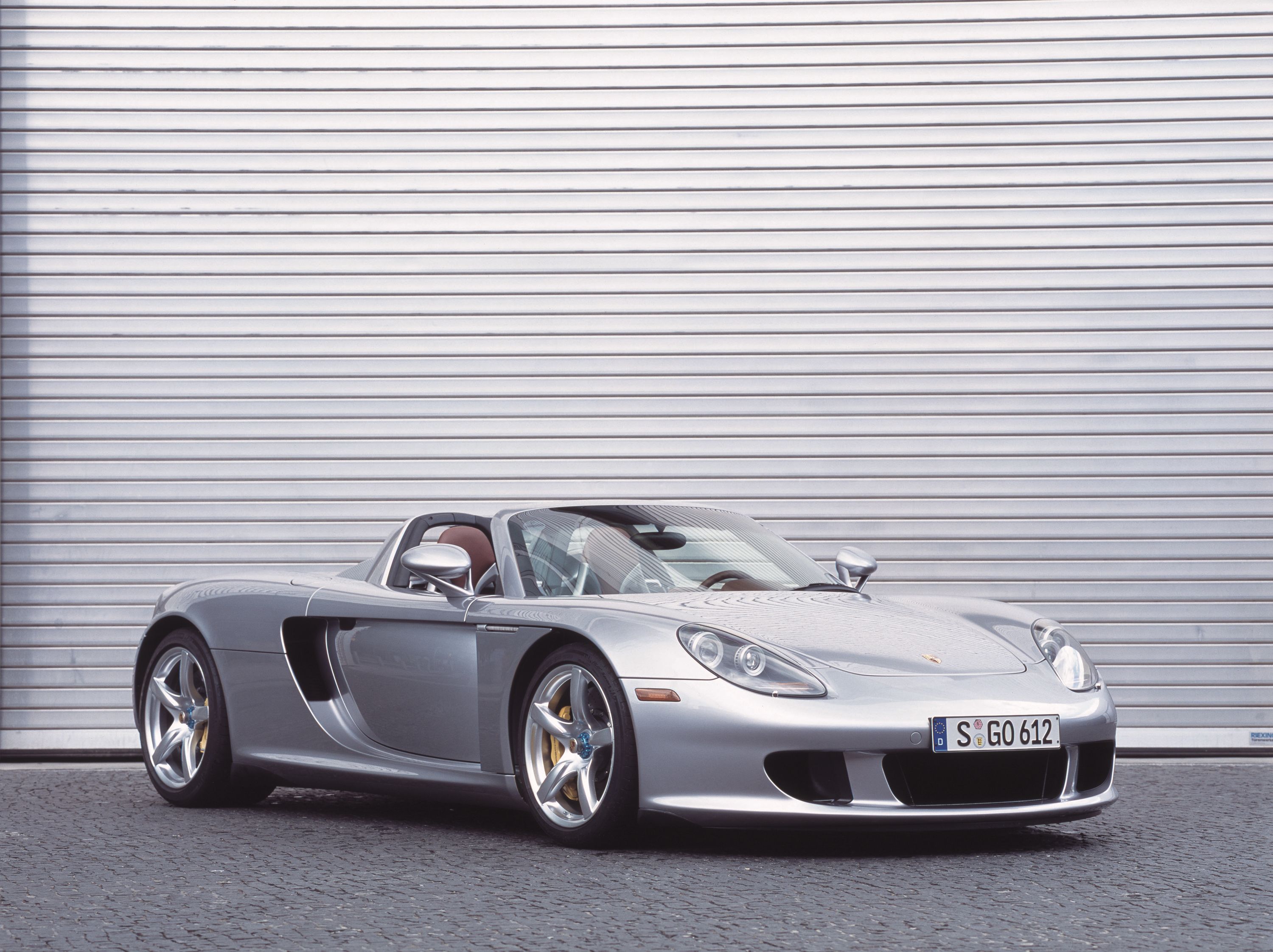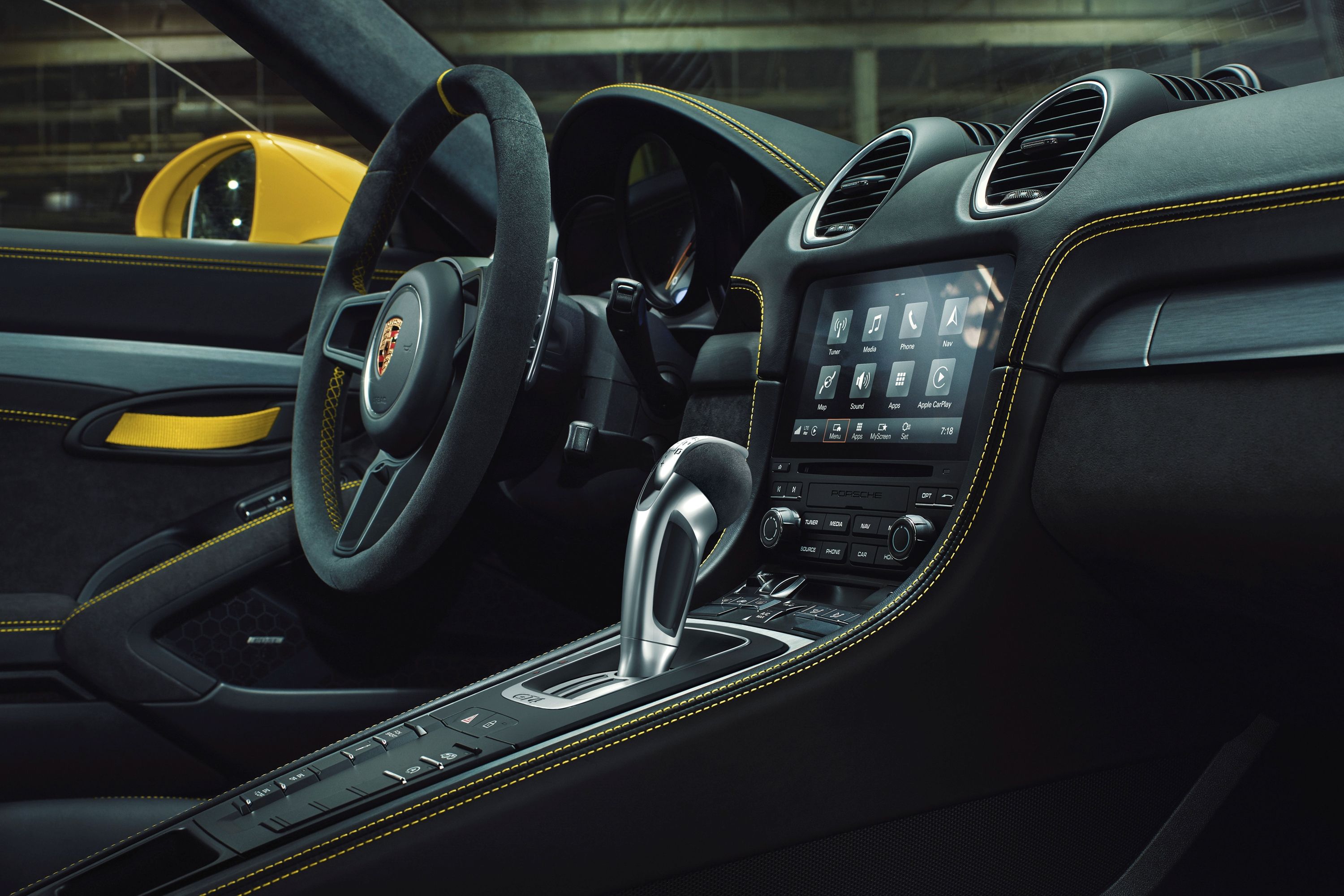5 Modern Supercars That Channel The Spirit Of The Porsche Carerra GT
Hennessey recently spoke to CarBuzz about its American supercar in the same vein as the Porsche Carrera GT, which is something every automotive enthusiast can get behind. If you had to ask a pool of gearheads to name the best supercar produced between 2000 and 2009, the answer would likely be the Porsche Carrera GT, for multiple reasons we’ll dive into as we move down this list. That’s no small feat, considering this timeline also includes the Ferrari Enzo, the Bugatti Veyron, the Koenigsegg CCX, and the Pagani Zonda. Your answer might be different, and that’s OK; supercars are emotional things, and we all feel things differently.

Related
Is The Porsche Carrera GT The Most Dangerous Road Car Ever Made?
There has been a lot of destruction involving Porsche’s crazy supercar.
Why is the Porsche Carrera GT so revered? There are multiple reasons why, but we think it collectively boils down to it being the last truly analog supercar, which makes it extremely intimidating in a world where supercar makers are relying more on technology than drivers. In recent months, Ferrari has filed a series of patents that will help drivers get the most out of their next-generation supercars and hypercars.
In the Porsche Carrera GT, you got rudimentary traction control and ABS brakes. The traction control wasn’t there to help you out on a track but rather to keep owners from scraping the roof on a wet public road. Stability control was available at the time, but Porsche chose not to include it to make the car as raw as possible. As a reminder, here’s its basic spec sheet.
Model | 2004 Porsche Carrera GT |
Engine | 5.7-liter naturally aspirated V10 |
Power | 604 hp @ 8,000 RPM |
Torque | 435 lb-ft @ 5,750 RPM |
0-60 MPH | 3.5 seconds |
Top Speed | 205 MPH |
Curb Weight | 3,042 lbs |
After Hennessey made the claim its new car would be an American successor to the Carrera GT, we sat around in the office wondering out loud whether there’s a modern car that perfectly channels the spirit of the GT. The answer is no, but there are modern supercars and hypercars that mimic specific elements of the Carrera GT formula.
5
Mercedes-AMG One – An Engine Borrowed From A Formula 1 Car
Model | 2024 Mercedes-AMG One |
Engine | 1.6-liter turbocharged V6 with hybrid assist |
Power | 1,049 hp @ 9,000 rpm |
Torque | Not quoted by Mercedes-AMG |
0-60 MPH | 2.9 seconds |
Top Speed | 218 MPH |
Curb Weight | 3,737 lbs |
A full 20 years separate these cars, but both can trace the roots of their engines back to the pinnacle of motorsport. Many know that the Carrera GT’s engine was supposed to be used in a Le Mans car, but that idea was shelved until the Carrera GT concept caused such a stir when it was unveiled in 2000 that Porsche simply had to put it into production.
But before it was a Le Mans engine, it was an F1 engine. Porsche worked in secret for the Arrows F1 Team, designing the ideal engine. The deal was canceled after Footwork purchased the majority share in Arrows and decided to go racing with an established Porsche V12 engine instead. The V10 was shelved for the first time in 1992 and only dusted off a few years later in preparation for the 1999 Le Mans 24 Hr. The original racing V10 was only 5.5 liters, but Porsche bored it out to 5.7 liters for the production car, along with a few other adjustments like replacing the pneumatic valve springs with conventional ones.
The Mercedes-AMG One is the answer to whether you could fit the F1 powertrain from the hybrid era into a hypercar. The answer is obviously yes, but it was not an easy task. It was such a complex mission that Mercedes produced an entire documentary about the process. To give you an idea of the challenges Mercedes-AMG faced, consider the idling speed of any modern car. It’s roughly between 600 and 900 RPM. An F1 hybrid powertrain idles at 5,000 RPM, and that’s just one of the challenges the team faced. Somehow, AMG made it work, but don’t expect it to be repeated ever again.
It was worth it, however. The AMG One is the King of the Green Hell.
4
Dodge Viper – An Angry V10-Powered Car That Loves To Bite
Model | 2017 Dodge Viper |
Engine | 8.4-liter naturally aspirated V10 |
Power | 645 hp @ 6200 rpm |
Torque | 600 lb-ft @ 5000 rpm |
0-60 MPH | 3.3 seconds |
Top Speed | 206 MPH |
Curb Weight | 3,378 lbs |
We’re not suggesting the 2017 Viper is comparable to the mighty Carrera GT, but they do have three things in common: a V10 engine, a manual gearbox, and a reputation for being a bit gnarly. That’s where the similarities end, however. The Viper is front-engined and rear-wheel driven, while the Carrera GT’s engine was mounted in the middle. The Porsche’s V10 was also a technological marvel, while Dodge simply took the big-ass muscle car engine approach. To be fair, in this case, displacement won.
The Dodge is here because it has the same reputation for being gnarly, though it has to be said that it may be unfair in both cases. The Viper is perfectly fine if you treat it with respect, but if you’re going to pin the throttle coming out of a car meet, it will bite you. The Carrera GT had a difficult clutch, but its bad reputation came from a very high-profile crash, caused by old tires, and a number of crashes.
Still, the Carrera GT was scary. So scary, in fact, that Walter Rohrl even went on record to say it was “the first car in my life that I drive and I feel scared.”
3
2024 Aston Martin Valour – A Bespoke Manual Gearbox
Model | 2024 Aston Martin Valour |
Engine | 5.2-liter twin-turbo V12 |
Power | 705 hp |
Torque | 555 lb-ft |
0-60 MPH | 3.4 seconds |
Top Speed | 200+ MPH |
Curb Weight | 3,732 lbs |
Flappy paddles were already all the rage when the Carrera GT made its debut. Around 50% of the supercars at the time were already equipped with paddles behind the wheels, with the Aston Martin Vanquish and the Ferrari Enzo/Maserati MC12 being the best examples. Porsche could have done the same, and PDK is much older than most people think.

Related
Porsche Spent 50 Years Perfecting The PDK Dual-Clutch Transmission
The full history of the advanced gearbox that has almost killed the manual.
Still, the Germans were aiming for driving nirvana, so it had to be manual. There wasn’t a manual available that could handle the power output of the V10, so Porsche built a bespoke six-speed manual transmission and the now-infamous Porsche Ceramic Composite Clutch, or PCCC for short. Aston Martin, who adopted the flappy paddle system earlier than most, surprised the world when it launched the Valour 20 years after the Carrera GT with a bespoke six-speed manual. It’s no secret that the Aston Martin was designed for purists, but unfortunately, the Valour was also described as an “end-of-era” specification.
Aston Martin’s walnut option for the gear lever must be an homage to the Beachwood lever in the Carrera GT, which remains a standout feature.
2
Lexus LFA – A High-Tech And Sonorous V10 Soundtrack
Model | 2011 Lexus LFA |
Engine | 4.8-liter naturally aspirated V10 |
Power | 552 hp @ 8700 rpm |
Torque | 354 lb-ft @ 6800 rpm |
0 – 60 MPH | 3.5 seconds |
Top Speed | 202 MPH |
Curb Weight | 3,483 lbs |
There isn’t a shortage of V10 cars to choose from, but only one can stand toe-to-toe with the Carrera GT when it comes to engine technology and noise. First, the LFA’s V10 is relatively tiny compared to the likes of the Viper, Audi R8, and Lamborghini Huracán. It was angled at 72 degrees for ultimate smoothness, yet it can happily rev to 9,000 rpm, officially making it one of the highest-revving engines ever. Thanks to forged pistons and 10 throttle bodies, it revved so fast that an analog tachometer famously couldn’t keep up, leading to the development of a special LCD screen that still inspires Lexus interiors to this day.
1
Mustang GTD – A Racing-Inspired Push Rod Suspension
Model | 2025 Mustang GTD |
Engine | 5.2-liter supercharged V8 |
Power | 800 hp @ 7150 rpm |
Torque | Not disclosed yet |
0-60 MPH | Not disclosed yet |
Top Speed | Not disclosed yet |
Curb Weight | Not disclosed yet |
We’ll use a very basic explanation for a push rod suspension system, best known for being used by Formula 1 cars. The Carrera GT was equipped with this system, which will also be standard on the 2025 Mustang GTD supercar. And yes, it most definitely is a supercar. Instead of mounting a damper on a traditional double wishbone suspension, a rod is put in place and connected to a bell crank. The damper and spring are mounted onboard and controlled via a rod. Cars with this kind of suspension setup don’t come along often because it’s best suited for track use. It reduces weight and allows air to flow more freely around the wheels. Who would have thought that we’d use the Porsche Carrera GT and Ford Mustang in the same sentence 20 years down the line?